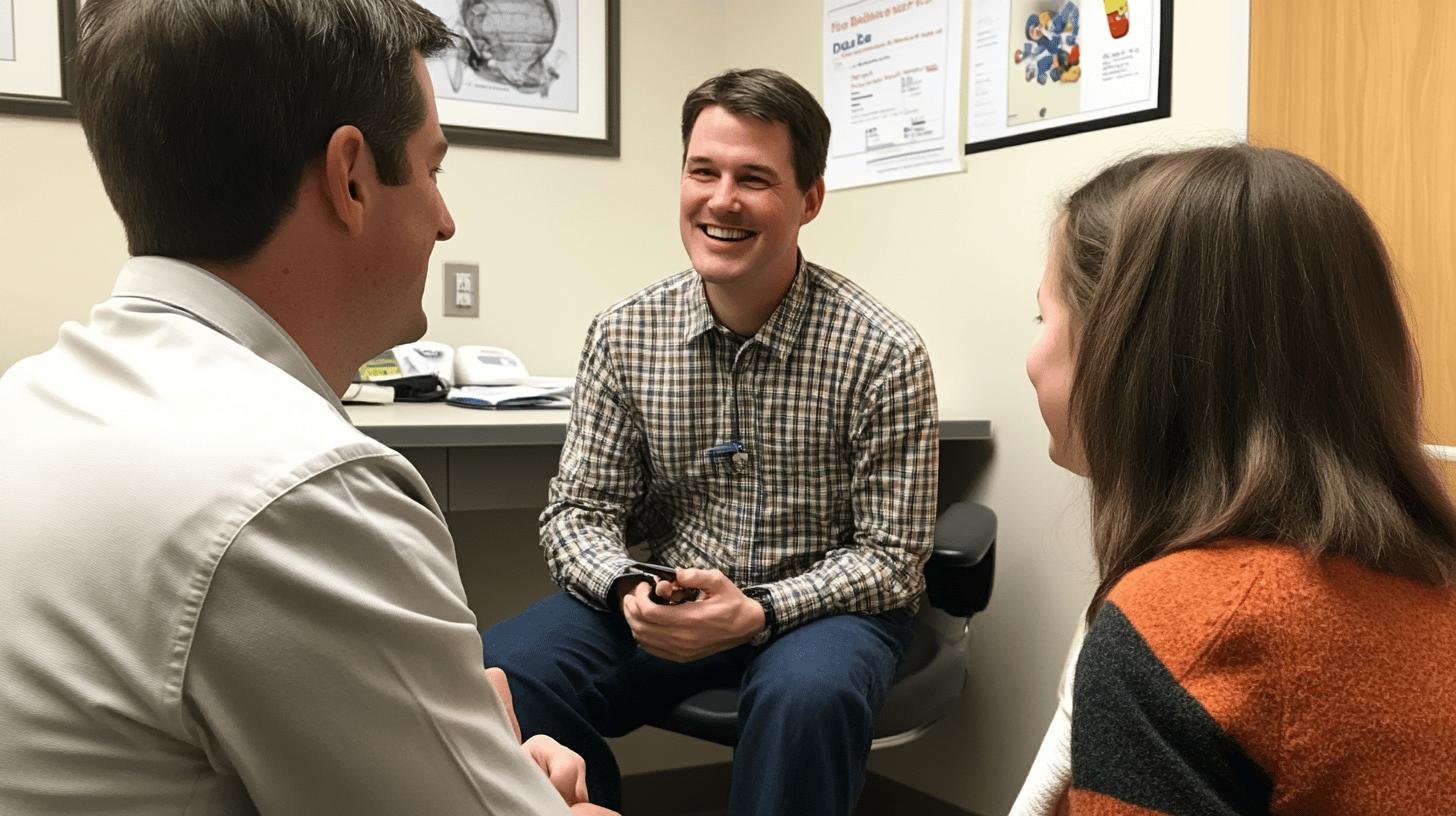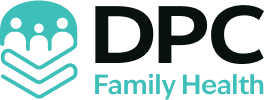TL;DR:
- Pediatric Direct Primary Care (DPC) focuses on individualized care for children, reducing the pediatrician’s patient load.
- DPC fosters closer doctor-patient relationships, leading to personalized treatment plans.
- Operates on a flat fee model, covering various services and eliminating co-pays and deductibles.
- Includes routine check-ups, vaccinations, telemedicine, nutrition advice, and mental health support.
- Offers same-day or next-day appointments with minimal wait times.
- DPC eliminates insurance billing, reducing administrative overhead and overall healthcare costs.
- Families report improved patient satisfaction and better health outcomes with DPC.
Are you tired of rushing in and out of doctor appointments with your little one? Let’s chat about a game-changer: Pediatric Direct Primary Care (DPC). Imagine having a doctor who truly knows your kiddo and has the time to listen. Pediatric DPC isn’t just a healthcare model; it’s a personalized experience where your family pays a flat fee, skipping the insurance hassles. Ready to learn how this can save you money and stress? Stick around, and we’ll dive into how it’s all possible.
Understanding Pediatric Direct Primary Care
Pediatric Direct Primary Care (DPC) takes a patient-centered approach tailored to children and their families. Instead of managing many patients, pediatricians in DPC handle fewer, allowing them to offer more thorough and individualized care. This means your child gets the attention they need, giving you peace of mind knowing your pediatrician is genuinely invested in your child’s health.
The patient-centric nature of DPC is transformative. It fosters a closer doctor-patient relationship, where the pediatrician really knows your child’s medical history, quirks, and needs. This leads to more personalized treatment plans and better health outcomes. Imagine having a pediatrician who remembers your kid’s favourite toy and latest milestone without checking the chart — pretty awesome, right?
Financially, DPC operates on a flat fee basis, which can lead to significant cost savings. Families pay a regular fee that covers a wide range of services. This removes the need for insurance co-pays, deductibles, and other out-of-pocket expenses. By cutting out the middleman (hello, insurance companies!), you save money and reduce the administrative headaches often associated with traditional healthcare models.
Benefits of Pediatric Direct Primary Care

The benefits of Pediatric Direct Primary Care (DPC) are like having a VIP pass to your child’s health. Firstly, let’s talk about personalized care. In a pediatric DPC model, your kiddo gets more attention from their doctor because the practice takes on fewer patients. This means longer, more meaningful appointments where your pediatrician really gets to know your child. It’s like having a doctor who’s also a friend—someone who remembers their favourite superhero and can spot subtle changes in their health.
Moreover, communication is a breeze. DPC practices offer direct access to your pediatrician through phone calls, texts, or even video chats. Got a late-night question about a weird rash? There is no need to wait until morning or navigate a maze of phone menus. The ease of getting in touch with your child’s doctor can make all the difference when you’re stressed out about their health.
Preventive Care Benefits
- Guidance on nutrition
- Exercise recommendations
- Healthy lifestyle choices
- Vaccination schedules
- Developmental milestones tracking
Preventive care is another huge perk of pediatric DPC. This model focuses on keeping your kids healthy, not just treating them when sick. Your pediatrician will guide you on everything from balanced diets to exercise routines, helping to nip potential health issues in the bud. Regular check-ins and vaccination schedules ensure your child stays on track with their growth and development. Think of it as having a health coach always in your corner.
Let’s also discuss appointment times and accessibility. Pediatric DPC practices often offer same-day or next-day appointments with minimal wait times. No more sitting in a waiting room for an hour! Because your pediatrician isn’t juggling a huge patient load, they can spend more time with each child. This allows for thorough exams and gives you plenty of time to ask questions.
In summary, personalized care, preventive focus, and easy access make pediatric DPC a game-changer for your family’s healthcare. Why settle for rushed visits and long wait times when you can have a healthcare experience that puts your child first?
Cost Structure of Pediatric Direct Primary Care
Pediatric Direct Primary Care (DPC) operates on a flat fee model, typically involving a monthly payment. This fee can vary depending on the practice but generally covers various medical services. These services usually include routine check-ups, vaccinations, and specific procedures. Think of it as an all-you-can-eat buffet for your child’s healthcare needs—one regular payment, and you’re covered for most primary care services.
By eliminating insurance billing, pediatric DPC reduces administrative overhead. Your pediatrician can focus more on your child’s health than drowning in paperwork. It also potentially lowers overall costs since there are no co-pays, deductibles, or other out-of-pocket expenses. So, while the idea of paying a monthly fee might seem like an extra cost, it simplifies budgeting and often saves money in the long run.
Services Included in Pediatric Direct Primary Care

Pediatric Direct Primary Care (DPC) offers a comprehensive list of services. General services include routine check-ups, vaccinations, and sick visits. These services ensure your child stays healthy and catches any potential issues early. Imagine not having to worry about co-pays every time you need to visit the doctor for a regular check-up or a vaccination. That’s a huge relief for most families!
Specialized services can be a game-changer. Pediatric DPC often includes lactation consulting for new moms, nutrition advice to keep your kids eating healthy and sleep consulting to solve those bedtime battles. You can also find psychological services to support your child’s mental health. It’s like having a whole team dedicated to your child’s well-being—all under one roof.
Here’s a handy table summarizing the services you can expect:
| Service | Description |
| — | — |
| Routine Check-ups | Regular health assessments |
| Vaccinations | Immunizations to prevent diseases |
| Sick Visits | Appointments for acute illnesses |
| Telemedicine Consultations | Virtual doctor visits |
| Mental Health Guidance | Support for emotional well-being |
| Chronic Disease Management | Ongoing care for long-term illnesses |
Membership perks might include telemedicine consultations, no co-pay office visits, comprehensive annual physical exams, routine pediatric procedures, and tests. You also get mental health and wellness guidance, simple wound care, and chronic disease management. With these services, it’s like having a healthcare safety net that catches all the little problems before they become big ones.
Comparing Pediatric Direct Primary Care to Traditional Healthcare Models
Pediatric Direct Primary Care (DPC) shakes up the traditional healthcare model by eliminating insurance billing. This means no more dealing with insurance claims, co-pays, or deductibles. Pediatricians can focus more on patient care without the administrative overhead of insurance. This shift not only simplifies the billing process but also lowers the overall cost of healthcare. You pay a flat fee, covering a wide range of services, making it easier to budget for your child’s medical needs.
In traditional healthcare models, most of a practitioner’s time and resources go into managing insurance claims and paperwork. DPC practices can skip that hassle entirely. The result? More time for your pediatrician to spend with you and your child. This means more personalized care, longer appointments, and a doctor who’s not rushing to get to the next patient. The reduced administrative burden also translates into a more efficient practice focusing squarely on health outcomes.
Real-Life Examples
- Improved patient satisfaction
- Better health outcomes
- Enhanced convenience
- Higher quality of care
Real-life examples back up these claims. Families often report improved patient satisfaction when switching to a pediatric DPC model. Your child gets more attention with fewer patients per doctor, resulting in better health outcomes. For instance, a parent might share that their pediatrician caught a developmental issue early, thanks to the extra time spent during a routine check-up. This enhanced level of care leads to quicker diagnoses and more effective treatments.
Lastly, pediatric DPC’s convenience and quality of care can’t be overstated. Family testimonials highlight the ease of scheduling same or next-day appointments, minimal wait times, and direct communication with their pediatrician. One parent mentioned how they could text their pediatrician late at night about a concern and get an immediate response. This level of accessibility and personalized care isn’t possible in traditional healthcare models, making DPC a standout choice for many families.
Final Words
Pediatric direct primary care (DPC) offers a patient-centered approach tailored to children and their families. It fosters a closer doctor-patient relationship and simplifies healthcare costs with flat fees.
The benefits are clear: personalized care, better access to your pediatrician, and a focus on preventive health.
With a straightforward cost structure and a comprehensive range of services, pediatric DPC makes healthcare more accessible and efficient.
Pediatric direct primary care is a comforting and practical option in a world where healthcare can be overwhelming. Here’s to healthier, happier families!
FAQ
What is Pediatric Direct Primary Care (DPC)?
Pediatric Direct Primary Care (DPC) focuses on a patient-centred approach tailored to children’s unique needs and their families.
How does Pediatric DPC differ from traditional healthcare?
Pediatric DPC provides a more intimate doctor-patient relationship. Pediatricians typically have fewer patients, allowing for thorough care. This contrasts with traditional models, which often involve high patient loads and shorter visit times.
What are the benefits of Pediatric DPC?
Key benefits include personalized care, longer appointment times, and better access to the physician. Families receive comprehensive preventive care, from nutrition advice to developmental milestones tracking.
What services are included in Pediatric DPC?
Services often include routine check-ups, vaccinations, sick visits, telemedicine consultations, mental health guidance, and chronic disease management.
How much does Pediatric DPC cost?
The cost structure typically involves a monthly payment covering various medical services. This flat fee eliminates insurance billing, which can reduce overall healthcare costs.
Can I find a Pediatric DPC near me?
Yes, Pediatric DPC practices are becoming more common. Search for “Pediatric Direct Primary Care near me” or check local directories for options like Breakthrough Pediatrics or Zest Pediatrics.
What makes Pediatric DPC financially beneficial?
Families pay a flat fee for services, which can lead to cost savings by eliminating the need for insurance co-pays, deductibles, and other out-of-pocket expenses.
How are preventive care benefits provided in Pediatric DPC?
Preventive care in Pediatric DPC includes guidance on nutrition, exercise recommendations, healthy lifestyle choices, vaccination schedules, and tracking developmental milestones.
Can I contact my Pediatric DPC doctor quickly?
Absolutely! Pediatric DPC emphasizes enhanced accessibility, including same or next-day appointments, minimal wait times, and direct communication with pediatricians via phone or messaging.
How does Pediatric DPC improve patient outcomes?
Focusing on a personalized and accessible care model, Pediatric DPC often improves patient satisfaction and better health outcomes. Testimonials frequently highlight the convenience and quality of care in this model.

